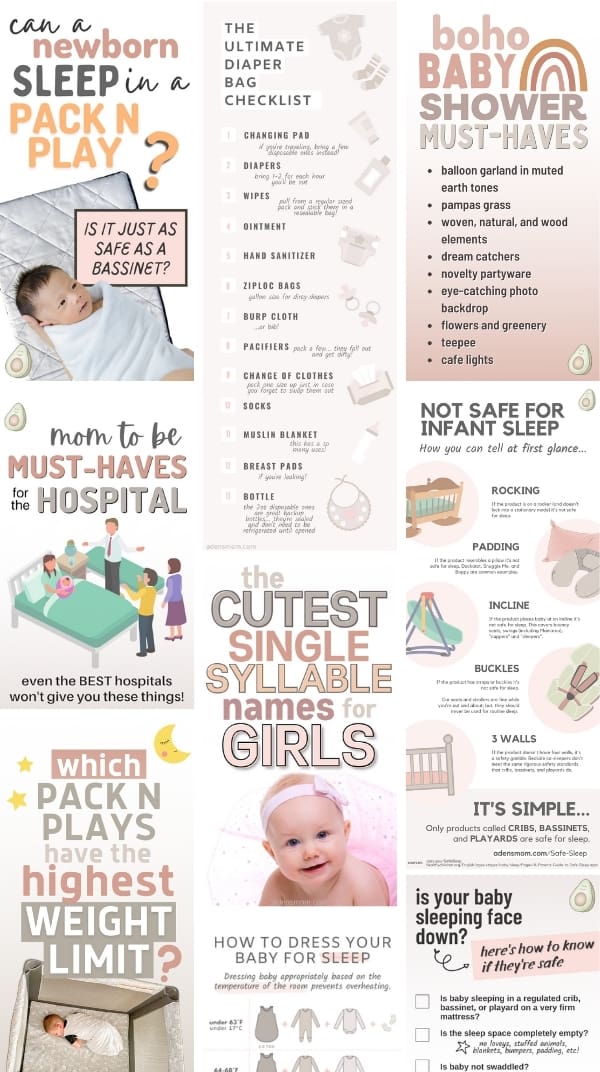Welcome to Safe Sleep 101
This post is a beginner-friendly introduction to safe sleep. Links to evidence and more in-depth discussions are provided underneath each section.
Why this matters
Sudden Infant Death Syndrome (SIDS) is the #1 cause of death in healthy, full-term babies.
The good news is that the vast majority of SIDS cases are preventable.
This post covers how to do just that.

Table of Contents
Guiding principles
Three things to understand up front.
Safe sleep basics
The ABC’s of safe sleep and common risky behaviors.
Swaddling
When to stop swaddling and why.
Nursery decor
The safety risks of wall hangings, mobiles, bumpers, and window treatments.
Baby wearing
Is it safe if your baby falls asleep while you’re wearing him in a carrier?
Travel systems
Should your baby sleep in his car seat or stroller?
Dressing for sleep
How to prevent overheating while still keeping your baby warm.
Pacifiers
Offer a pacifier to reduce the risk of SIDS.
Breastfeeding
Breastfeed to reduce the risk of SIDS.
Roomsharing
Share a room (not a bed) to reduce the risk of SIDS.
Products that are unsafe for sleep
A list of popular products that shouldn’t be used for sleep.
Products that are safe for sleep
What qualifies a product as safe and recommendations for safe sleep spaces.
Guiding principles
Let’s quickly cover three principles to wrap your head around:
1 – You can’t always tell ‘just by looking’ that certain things are risky.
SIDS prevention is VERY different from most other matters of infant health and safety.
When it comes to infant sleep, just because something appears to be safe, doesn’t mean that it is.
SIDS risk factors aren’t obvious—even to the experts.
It’s a fallacy that caregivers “instinctively” know what’s safest for their babies when it comes to safe sleep.
The truth is that without the scientific evidence to guide us, most of us get it wrong.
Much of what we know today about preventing SIDS was only discovered by painstakingly collecting and analyzing large amounts of data on incidences of SIDS.
2 – Many of the strategies to make babies sleep “better” are dangerous for that very reason.
An infant’s ability to wake easily is what protects them against SIDS.
3 – Your perception of the risk of SIDS is inherently biased.
Do not dismiss the risk of SIDS just because you don’t personally know people who have lost babies.
Now let’s dive in…
Safe Sleep Basics
Safe sleep sounds complicated and can feel overwhelming.
Thankfully, it’s simpler than it looks!
 Follow the ABC’s of safe sleep:
Follow the ABC’s of safe sleep:
Infants should sleep…
A – alone
B – on their back
C – in a regulated crib, bassinet or play yard, with nothing but a fitted sheet and a pacifier
 Remember that “sleep” doesn’t just mean at night… it refers to supervised naps too.
Remember that “sleep” doesn’t just mean at night… it refers to supervised naps too.
 If a baby falls asleep in their swing, seat, lounger, etc., it is not enough to just watch them — you must move them to a safe sleep space.
If a baby falls asleep in their swing, seat, lounger, etc., it is not enough to just watch them — you must move them to a safe sleep space.
Why can’t you just supervise — why do you have to move them?
Because asphyxia can look just like sleeping. There isn’t a fight for life or a choking sound to alert you that something is wrong.
 Safe sleep spaces are federally regulated. There are only 3 types of products that have undergone mandatory safety testing for infant sleep:
Safe sleep spaces are federally regulated. There are only 3 types of products that have undergone mandatory safety testing for infant sleep:
- CRIB
- BASSINET
- PLAY YARD (often called Pack N Play)
If a product is not explicitly called one of these names (in the user manual; not just the sales description), it is not safe for sleep.
Surprisingly common and surprisingly risky…
 Never share a bed with an infant. Bedsharing increases the risk of SIDS.
Never share a bed with an infant. Bedsharing increases the risk of SIDS.
 Never place a sleeping baby on a couch, chair, or adult bed due to the high risk of entrapment and suffocation.
Never place a sleeping baby on a couch, chair, or adult bed due to the high risk of entrapment and suffocation.
 Never add additional mattresses, blankets, or anything to make a baby’s sleep space more “comfortable.” The surface should be extra-firm and flat.
Never add additional mattresses, blankets, or anything to make a baby’s sleep space more “comfortable.” The surface should be extra-firm and flat.
 Never leave a baby alone with pets. Make sure animals are in a different room if you are unable to supervise.
Never leave a baby alone with pets. Make sure animals are in a different room if you are unable to supervise.
READ MORE
My lay-person friendly posts:
Safe sleep basics
- The ABC’s of Safe Sleep: How To Protect Your Baby From SIDS
- 3 Things I Can’t Believe I Didn’t Know About Safe Sleep
Choosing a safe place for your baby to sleep
- What Not to Put on a Baby Registry: UNSAFE Stuff to Skip
- Bassinet vs Pack ‘n Play: The Ultimate Guide to Help you Decide
- Can a Newborn Sleep in a Pack N Play?
- Are Memory Foam Crib Mattresses Safe?
- Bedside sleepers: Safe or Unsafe?
- Bassinet vs Crib: The Ultimate Guide to Help You Decide
- 6 Best Portable Bassinets
Keeping your baby safe during sleep
- Sleeping in a Mamaroo Swing: Is it Safe for Your Baby?
- When Can Baby Sleep with a Lovey?
- How to Keep a Baby Warm at Night (Evidence-Based Guide)
- How Long Can a Baby Sleep in a Bassinet? [Guide]
- When and How to Stop Swaddling: The Ultimate Guide
- Pack N Play Mattress 101: The Evidence-Based Safety Guide
- Snuggle Me Safety: The Evidence-Based Guide
- Are Nested Bean Sleep Sacks Safe?
- Are Supplemental Bassinet Mattresses a SIDS Risk?
- Can My Baby Sleep in a Bouncer?
- Are Pacifiers Safe for Sleep? Everything You Need to Know
- Is the Graco DuoGlider Safe for Sleep?
Evidence:
- SIDS and Other Sleep-Related Infant Deaths: Updated 2016 Recommendations for a Safe Infant Sleeping Environment (AAP)
- Ways to Reduce The Risk Of SIDS And Other Sleep-Related Causes Of Infant Death (NIH/NICHD)
- Safe Sleep – Cribs and Infant Products Information Center (CPSC)
- More resources and definitions
SHAREABLE GRAPHICS
You may share these graphics anywhere you want on social media as long as you do not alter them.
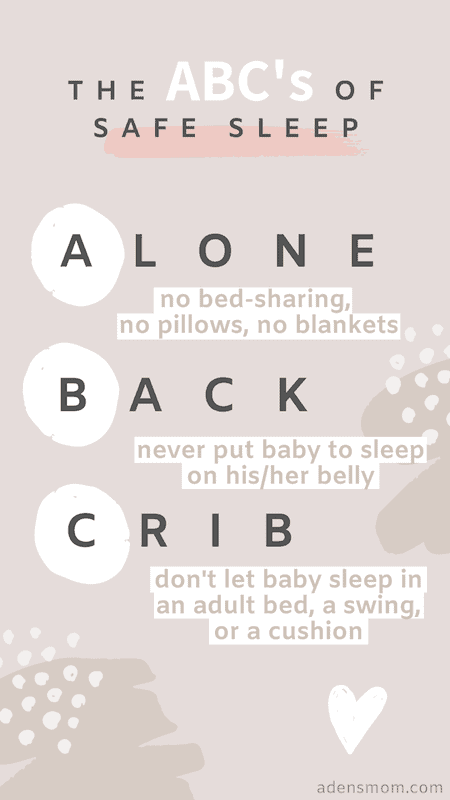
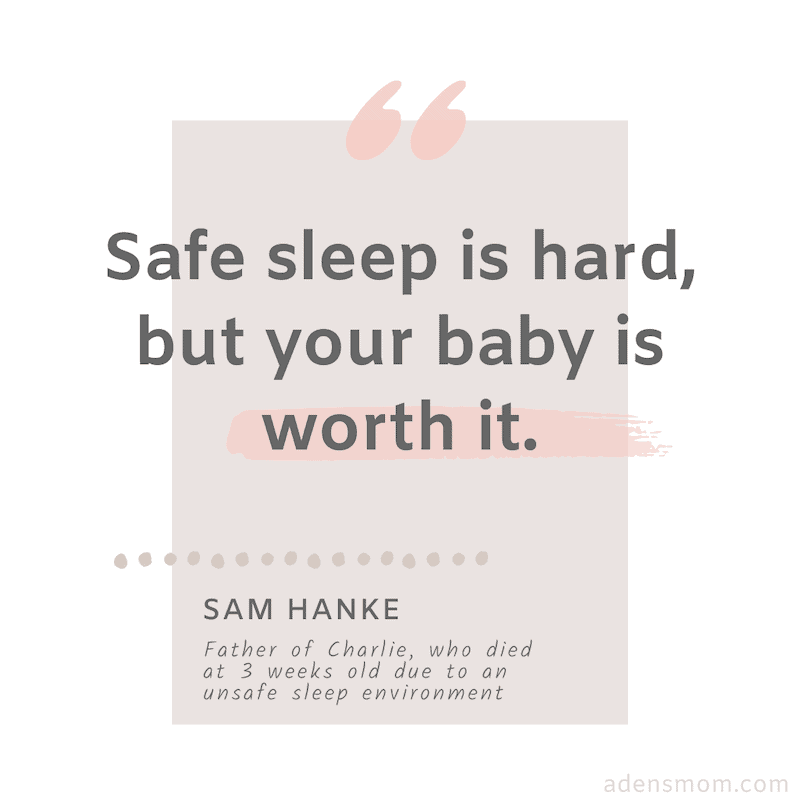
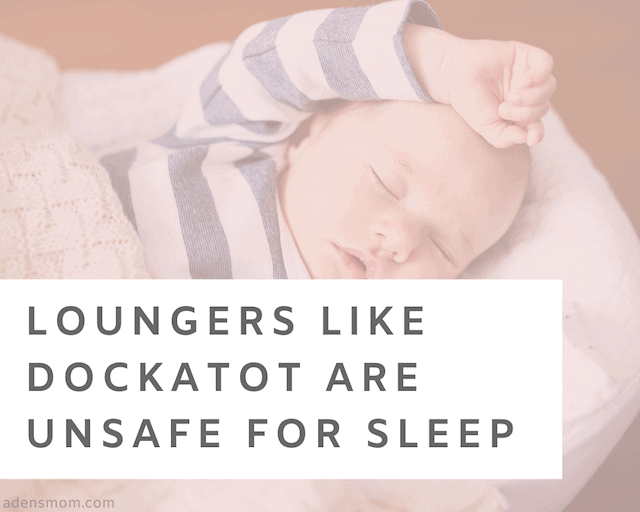
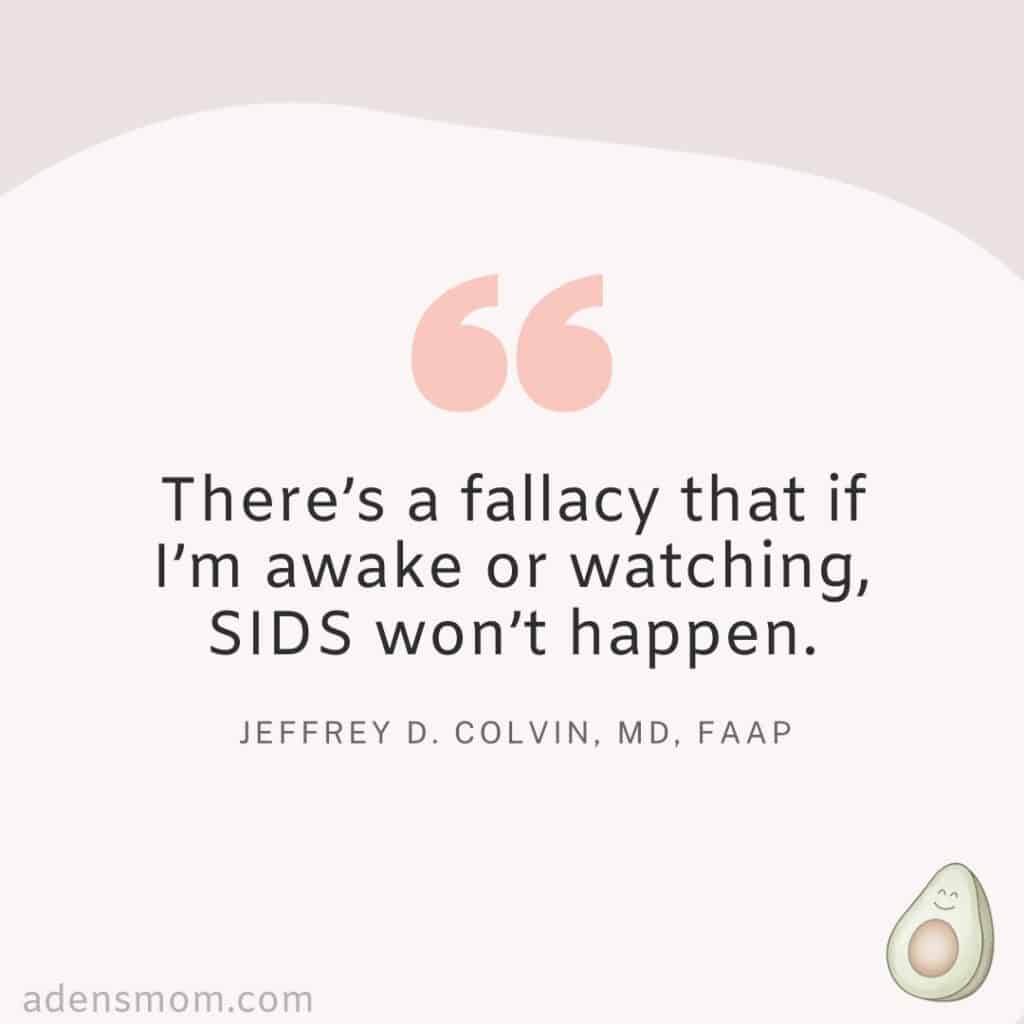
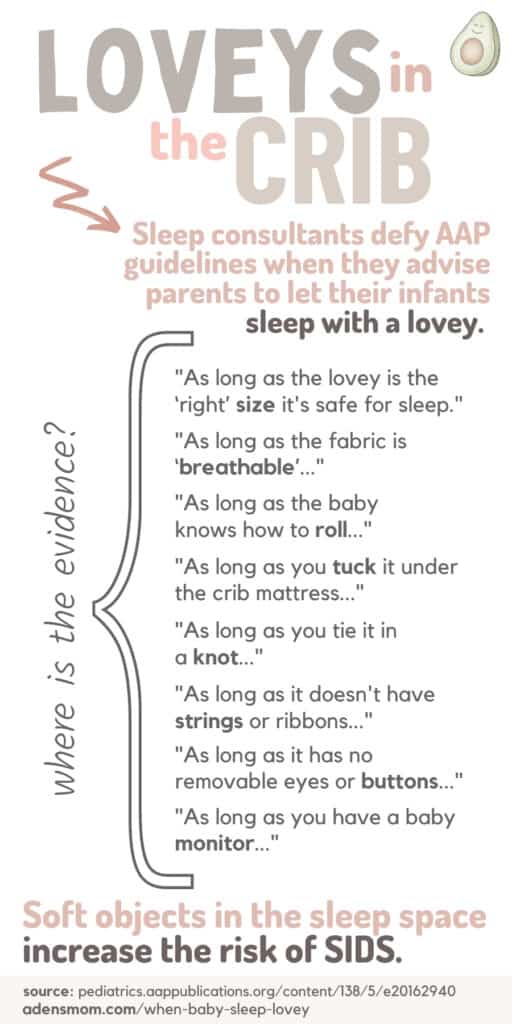
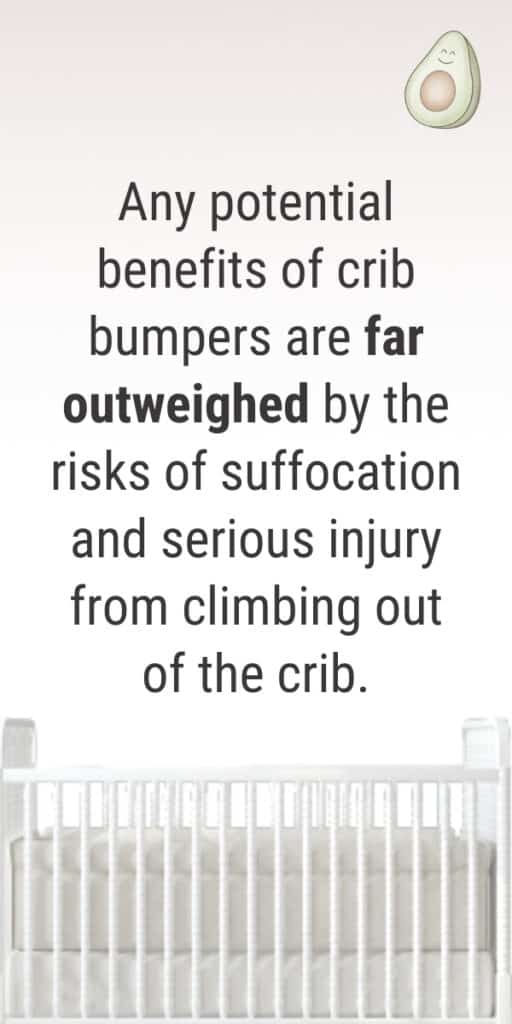
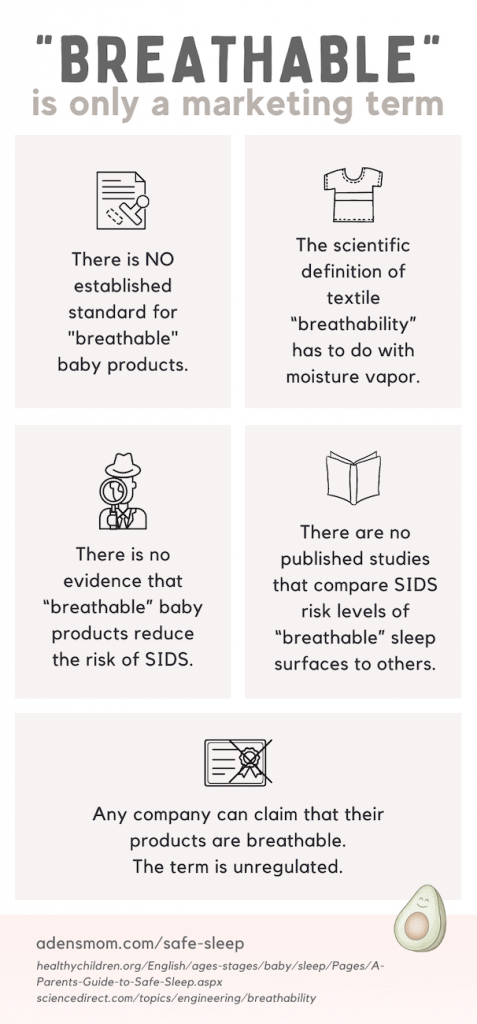

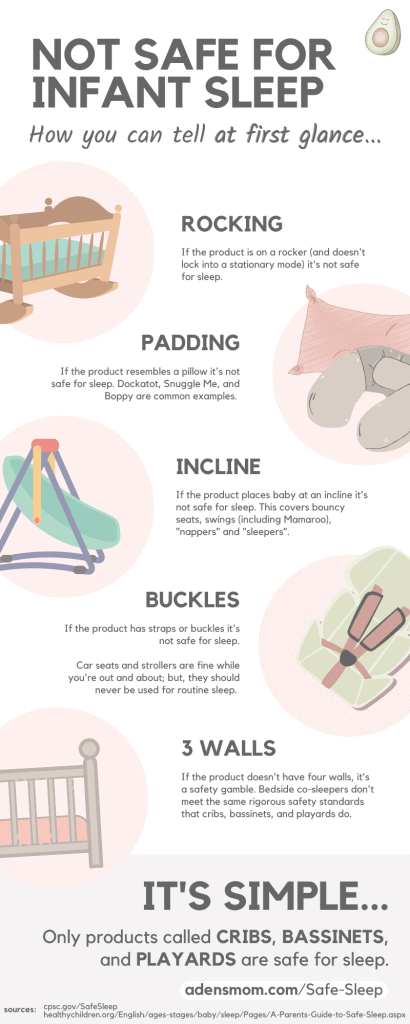
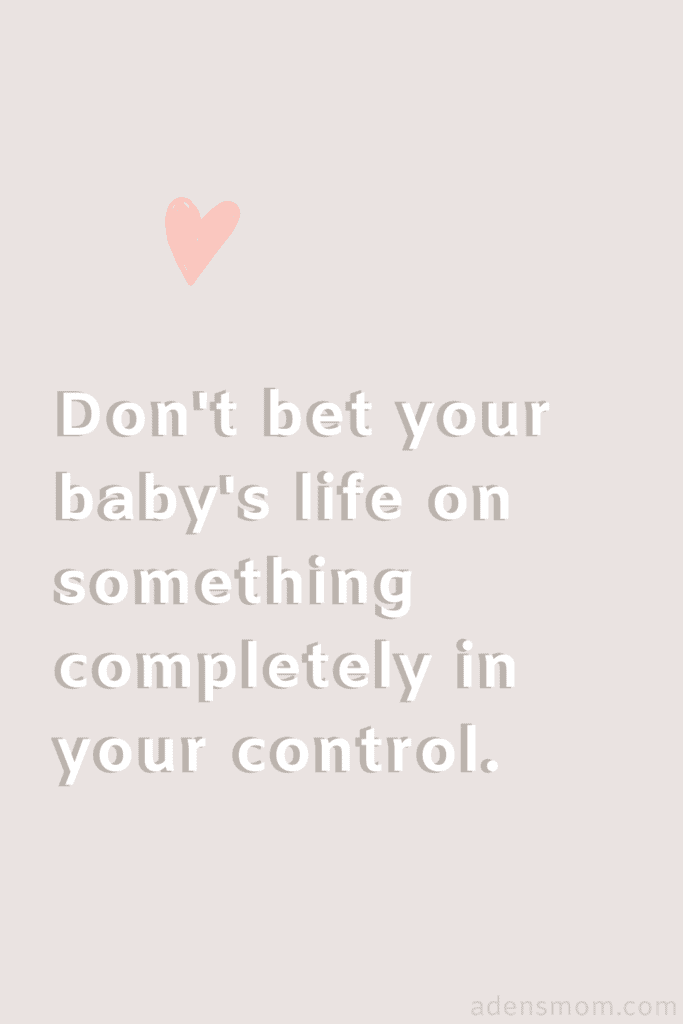
REQUEST A GRAPHIC! If you’d like to see any piece of safe sleep info in an easily shareable graphic, shoot me a quick email!
Swaddling
 It’s no longer safe to swaddle when your baby starts showing signs of rolling. The risk of death is high if a swaddled infant rolls onto their stomach.
It’s no longer safe to swaddle when your baby starts showing signs of rolling. The risk of death is high if a swaddled infant rolls onto their stomach.
 Many safe sleep experts instruct caregivers to stop swaddling at 8 weeks or first signs of rolling, whichever comes first.
Many safe sleep experts instruct caregivers to stop swaddling at 8 weeks or first signs of rolling, whichever comes first.
 Make sure the swaddle is tight enough so that it doesn’t ride up near the baby’s face. (Swaddling should not restrict the lower body for healthy hip development).
Make sure the swaddle is tight enough so that it doesn’t ride up near the baby’s face. (Swaddling should not restrict the lower body for healthy hip development).
 You can switch to a sleep sack (a wearable blanket) when it is no longer safe to swaddle.
You can switch to a sleep sack (a wearable blanket) when it is no longer safe to swaddle.
READ MORE
My lay-person friendly posts:
- When and How to Stop Swaddling: The Ultimate Guide
- How to Keep a Baby Warm at Night (Evidence-Based Guide)
- Are Nested Bean Sleep Sacks Safe?
- Are Dreamland Baby’s Weighted Sleep Sacks Safe?
- Help! My Baby Wants their Hands Out of the Swaddle
- How Many Swaddles Do I Need — and Which Ones are Best?
- Baby Merlin’s Magic Sleepsuit: Is it Safe?
Evidence:
SHAREABLE GRAPHICS
You may share these graphics anywhere you want on social media as long as you do not alter them.
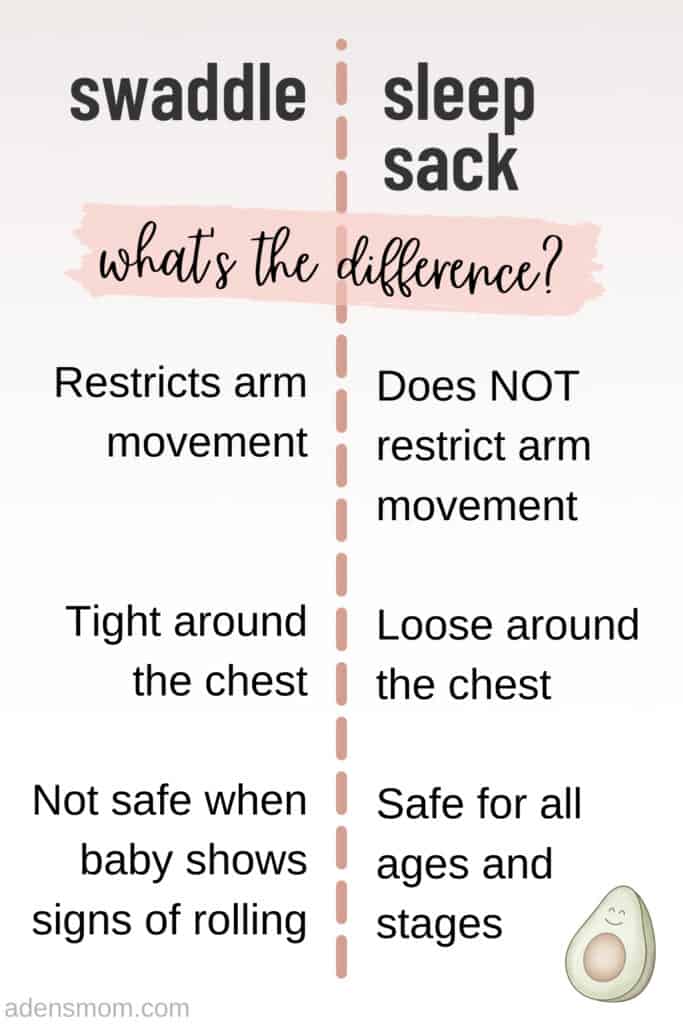


Nursery Decor
 Hard items like frames, mirrors, and name signs should not be hung over a crib.
Hard items like frames, mirrors, and name signs should not be hung over a crib.
 Mobiles attached to the crib are safe until 5 months or when baby begins to push up, whichever happens first.
Mobiles attached to the crib are safe until 5 months or when baby begins to push up, whichever happens first.
 Bumpers and rail covers are unsafe.
Bumpers and rail covers are unsafe.
 Window treatments and window cords should not be within 3 feet of a crib.
Window treatments and window cords should not be within 3 feet of a crib.
This is NOT an exhaustive list of nursery safety.
READ MORE
My lay-person friendly posts:
- 8 Things to DELETE from Your Baby Registry — and What to Register for Instead (Check out the sections about wall hangings and bedding sets)
- Baby vs Crib: Common Issues and How to Fix Them
Evidence:
SHAREABLE GRAPHICS
You may share these graphics anywhere you want on social media as long as you do not alter them.

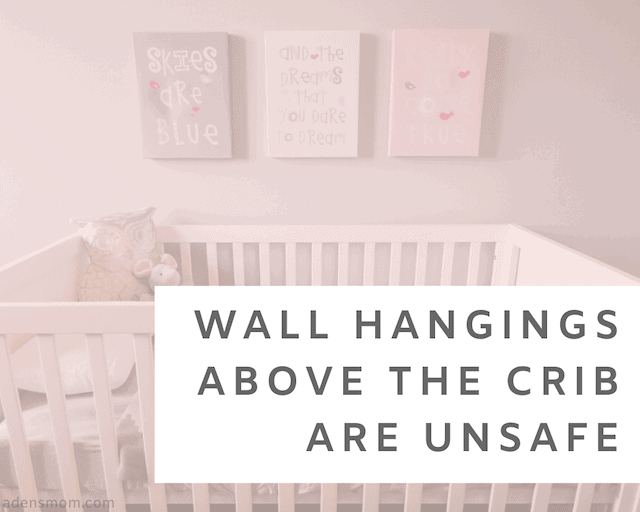
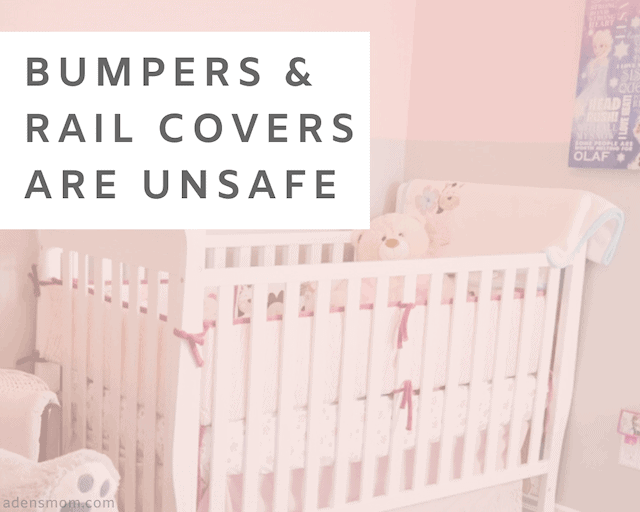
Baby Wearing
 It’s fine if your baby falls asleep while you’re baby wearing, but it’s best to transfer him to a safe sleep space when one is available.
It’s fine if your baby falls asleep while you’re baby wearing, but it’s best to transfer him to a safe sleep space when one is available.
 Follow the “TICKS” guidelines: Tight, In view at all times, Close enough to kiss, Keep chin off the chest, Supported back.
Follow the “TICKS” guidelines: Tight, In view at all times, Close enough to kiss, Keep chin off the chest, Supported back.
READ MORE
My lay-person friendly post:
- The ABC’s of Safe Sleep: How To Protect Your Baby From SIDS (The FAQs address baby wearing and related questions)
Evidence:
SHAREABLE GRAPHICS
Travel Systems
 It’s fine if your baby falls asleep in his car seat or stroller while you’re out and about, as long as they are properly buckled. Transfer them to a safe sleep space when one is available.
It’s fine if your baby falls asleep in his car seat or stroller while you’re out and about, as long as they are properly buckled. Transfer them to a safe sleep space when one is available.
 Car seats and strollers should not be used for routine sleep. They should only be used to transport your baby from one location to another.
Car seats and strollers should not be used for routine sleep. They should only be used to transport your baby from one location to another.
 Never leave the straps unbuckled or partially buckled due to strangulation risk.
Never leave the straps unbuckled or partially buckled due to strangulation risk.
READ MORE
A few car seat safety tips:
- If on a long drive, make sure to remove baby from the carseat at least every 2 hours.
- Don’t put anything in the carseat that didn’t come with it (strap covers, head support pillow, etc.) as these have not been crash tested with the carseat.
- There should be no blankets or bulky clothing under the car seat straps or on the baby’s body.
My lay-person friendly post:
- The ABC’s of Safe Sleep: How To Protect Your Baby From SIDS (The FAQs address car seats and strollers)
Evidence:
SHAREABLE GRAPHICS
REQUEST A GRAPHIC! I don’t currently have any graphics for car seats but if you have any ideas, shoot me a quick email!
Dressing for Sleep
 Dress your baby based on the temperature of the room, not the temperature outside.
Dress your baby based on the temperature of the room, not the temperature outside.
 Baby should be wearing no greater than 1 layer more than you. (Use the graphic below as a guide).
Baby should be wearing no greater than 1 layer more than you. (Use the graphic below as a guide).
 Hats and mittens are unsafe for sleep.
Hats and mittens are unsafe for sleep.
READ MORE
My lay-person friendly post:
Evidence:
SHAREABLE GRAPHICS
You may share these graphics anywhere you want on social media as long as you do not alter them.
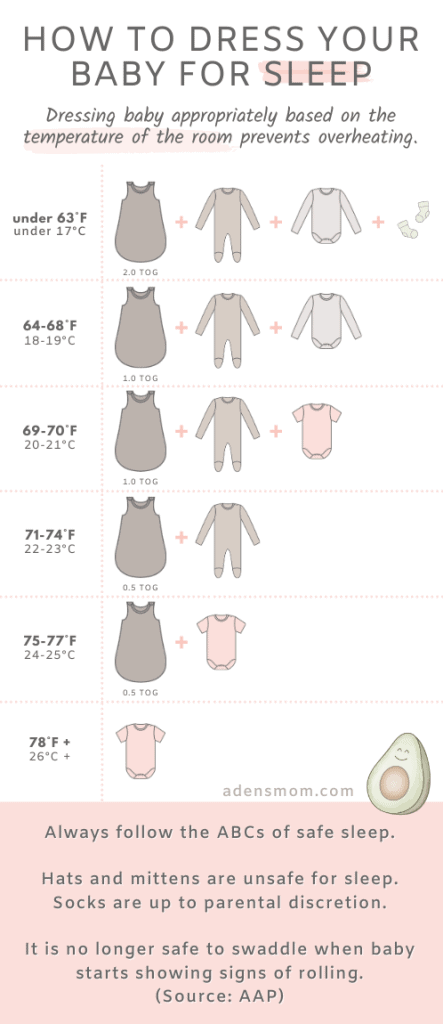
Pacifiers
 Offering a pacifier at the start of every sleep period reduces the risk of SIDS by up to 90%.
Offering a pacifier at the start of every sleep period reduces the risk of SIDS by up to 90%.
 The protective effect persists even if the baby drops the pacifier (so there is no need to replace it).
The protective effect persists even if the baby drops the pacifier (so there is no need to replace it).
 Pacifiers are safe to leave in the sleep space, but pacifier CLIPS are not.
Pacifiers are safe to leave in the sleep space, but pacifier CLIPS are not.
READ MORE
Notes:
- Scientists are not sure exactly how pacifiers reduce the risk of SIDS. While we have hard data on the effectiveness of pacifiers as a protective factor, the hypothesized mechanisms remain unconfirmed.
- There is no replacement for following the ABC’s of safe sleep. The ABC’s are the foundation of preventing SIDS.
- Protective factors do not stack.
Evidence:
SHAREABLE GRAPHICS
You may share these graphics anywhere you want on social media as long as you do not alter them.

Breastfeeding
 Breastfeeding reduces the risk of SIDS by up to 50%.
Breastfeeding reduces the risk of SIDS by up to 50%.
 Moms should be careful not to fall asleep while breastfeeding.
Moms should be careful not to fall asleep while breastfeeding.
READ MORE
Notes:
- Studies show that breastfed infants are more easily aroused from sleep than their formula-fed counterparts.
- Studies do not distinguish between direct breastfeeding and providing expressed milk.
- There is no replacement for following the ABC’s of safe sleep. The ABC’s are the foundation of preventing SIDS.
- Protective factors do not stack.
Evidence:
SHAREABLE GRAPHICS
You may share these graphics anywhere you want on social media as long as you do not alter them.
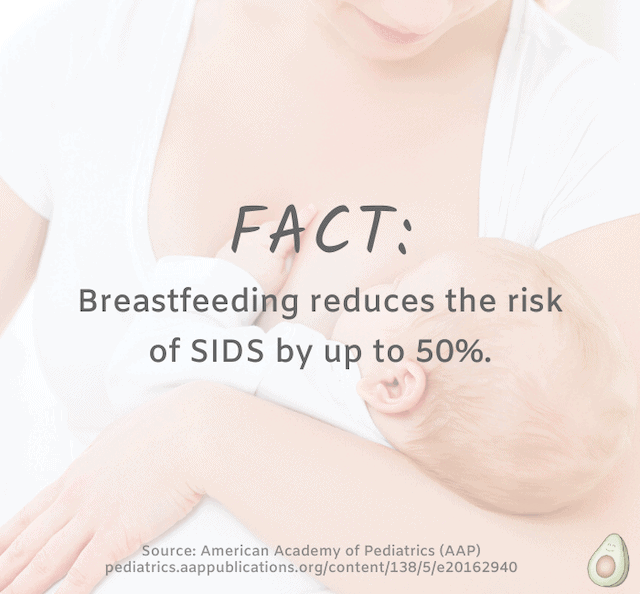
Roomsharing
 Roomsharing decreases the risk of SIDS by up to 50%.
Roomsharing decreases the risk of SIDS by up to 50%.
 The AAP recommends that infants sleep in the same room as a parent ideally for the first year after birth, but at least for the first 6 months.
The AAP recommends that infants sleep in the same room as a parent ideally for the first year after birth, but at least for the first 6 months.
Note: Room-sharing and bed-sharing are not the same thing.
READ MORE
Notes:
- There is no replacement for following the ABC’s of safe sleep. The ABC’s are the foundation of preventing SIDS.
- Protective factors do not stack.
Evidence:
SHAREABLE GRAPHICS
You may share these graphics anywhere you want on social media as long as you do not alter them.
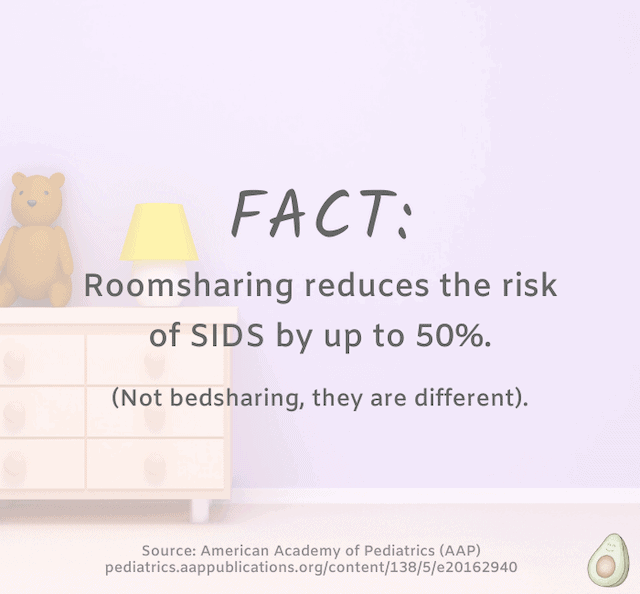
Products that are unsafe for sleep
MOST products are unsafe for sleep, even if they are marketed for sleep.
Keep in mind that there is no proactive agency that checks all of these products before they go on the market.
Do NOT assume that something is safe just because it’s carried by a major retailer.
There is a long list of examples below.
LIST OF PRODUCTS UNSAFE FOR SLEEP
Very important: This list is NOT exhaustive. A few popular products are included as examples.
Not safe for sleep…
![]() Crib accessories:
Crib accessories:
- BUMPERS
- RAIL COVERS
- PILLOWS
- “FLAT HEAD” PILLOWS
- HAMMOCKS
- POSITIONERS
- INCLINED WEDGES
- TENTS
- MATTRESS TOPPERS
![]() Bassinet accessories:
Bassinet accessories:
- HALO NEWBORN INSERT
- SNOO POSITIONER
![]() Inclined seats and bouncy chairs
Inclined seats and bouncy chairs
- ROCK ‘N PLAY (recalled)
- BABY BJORN BOUNCER
![]() Anything marketed as a “SLEEPER” or a “NAPPER”
Anything marketed as a “SLEEPER” or a “NAPPER”
- SWADDLEME BY YOUR BED SLEEPER (recalled)
- SWADDLEME BY YOUR SIDE SLEEPER
- PLAY YARD ATTACHMENTS (read this)
- BABY DELIGHT SNUGGLE NEST PORTABLE INFANT SLEEPER
![]() Nests and loungers
Nests and loungers
![]() Swings
Swings
- MAMAROO (read this)
- GRACO DUET
![]() Play mats + activity gyms
Play mats + activity gyms
![]() Weighted sleep products
Weighted sleep products
- ZEN SWADDLE NESTED BEAN (read this)
![]() Pacifier accessories
Pacifier accessories
- WUBBANUB
- PACIFIER CLIPS
![]() All this stuff
All this stuff
***One more time, just in case: this list is not exhaustive.***
SHAREABLE GRAPHICS
You may share these graphics anywhere you want on social media as long as you do not alter them.
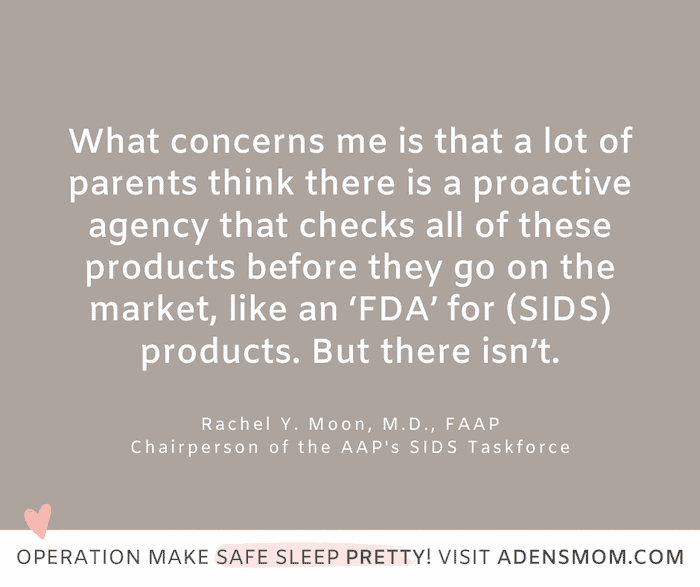
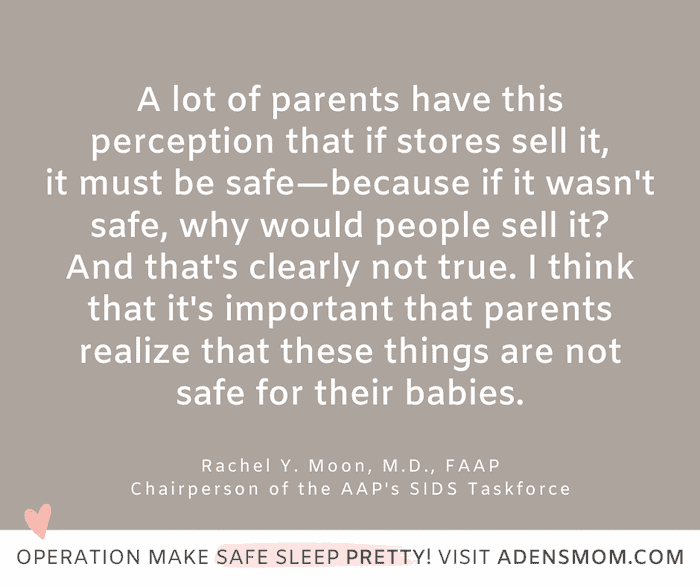
Safe Products for Sleep
Only safe if used as intended by the manufacturer and if you’re following all of the other safety guidelines we’ve discussed here.
CRIBS & BASSINETS
 The product should be called a “crib” or “bassinet” in the user manual.
The product should be called a “crib” or “bassinet” in the user manual. Use a crib or bassinet manufactured after June 2011. There is a good chance that an older crib no longer meets all the current safety standards, especially if it has a drop side. DO NOT USE a vintage or heirloom crib.
Use a crib or bassinet manufactured after June 2011. There is a good chance that an older crib no longer meets all the current safety standards, especially if it has a drop side. DO NOT USE a vintage or heirloom crib.
 Homemade or “DIY” cribs are unsafe as they have not been safety tested.
Homemade or “DIY” cribs are unsafe as they have not been safety tested.
 Purchasing a used crib is a risk, particularly if it’s not from someone you know and trust. You do not know whether the crib was previously broken and has been repaired or altered. (There have been many infant deaths associated with cribs that are broken and missing parts — including those that have been fixed.)
Purchasing a used crib is a risk, particularly if it’s not from someone you know and trust. You do not know whether the crib was previously broken and has been repaired or altered. (There have been many infant deaths associated with cribs that are broken and missing parts — including those that have been fixed.)
 Do not use a memory foam crib mattress. Your baby’s mattress should be firm.
Do not use a memory foam crib mattress. Your baby’s mattress should be firm.
 Make sure the mattress fits snugly against the inside of the crib.
Make sure the mattress fits snugly against the inside of the crib.
 Some crib mattresses have infant and toddler sides. Make sure the infant side is facing up for the first 12 months.
Some crib mattresses have infant and toddler sides. Make sure the infant side is facing up for the first 12 months.
PLAYARDS
 The product should be called a “playard” in the user manual.
The product should be called a “playard” in the user manual.
 Use a play yard manufactured after February 2013 (when new federal safety standards were implemented).
Use a play yard manufactured after February 2013 (when new federal safety standards were implemented).
Read more about Pack ‘n Play safety here.
READ MORE
More information: CRIBS
- Make Baby’s Room Safe: Parent Checklist (AAP)
- Federal safety standards for full-size cribs (CPSC)
- Federal safety standards for non-full-size cribs (CPSC)
- Safety alert: Drop-side cribs deemed dangerous by federal agency (AAP)
More information: BASSINETS
More information: PLAY YARDS
Wrapping up your introduction to safe sleep…
Congratulations, if you read this entire post, you are now a graduate of Safe Sleep 101!
Here are a few articles to read next:
- 3 Things I Can’t Believe I Didn’t Know About Safe Sleep
- What Not to Put on a Baby Registry: UNSAFE Stuff to Skip
- When and How to Stop Swaddling: The Ultimate Guide
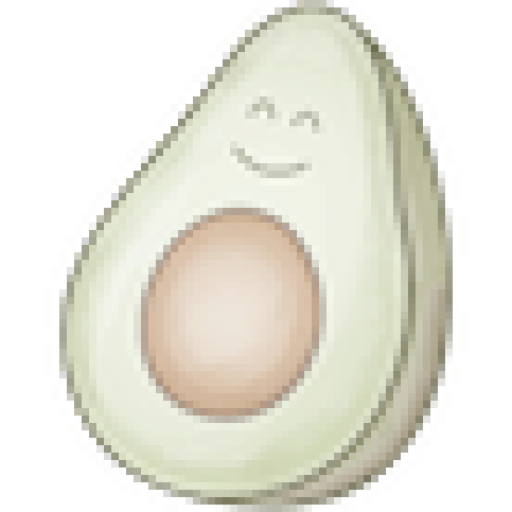
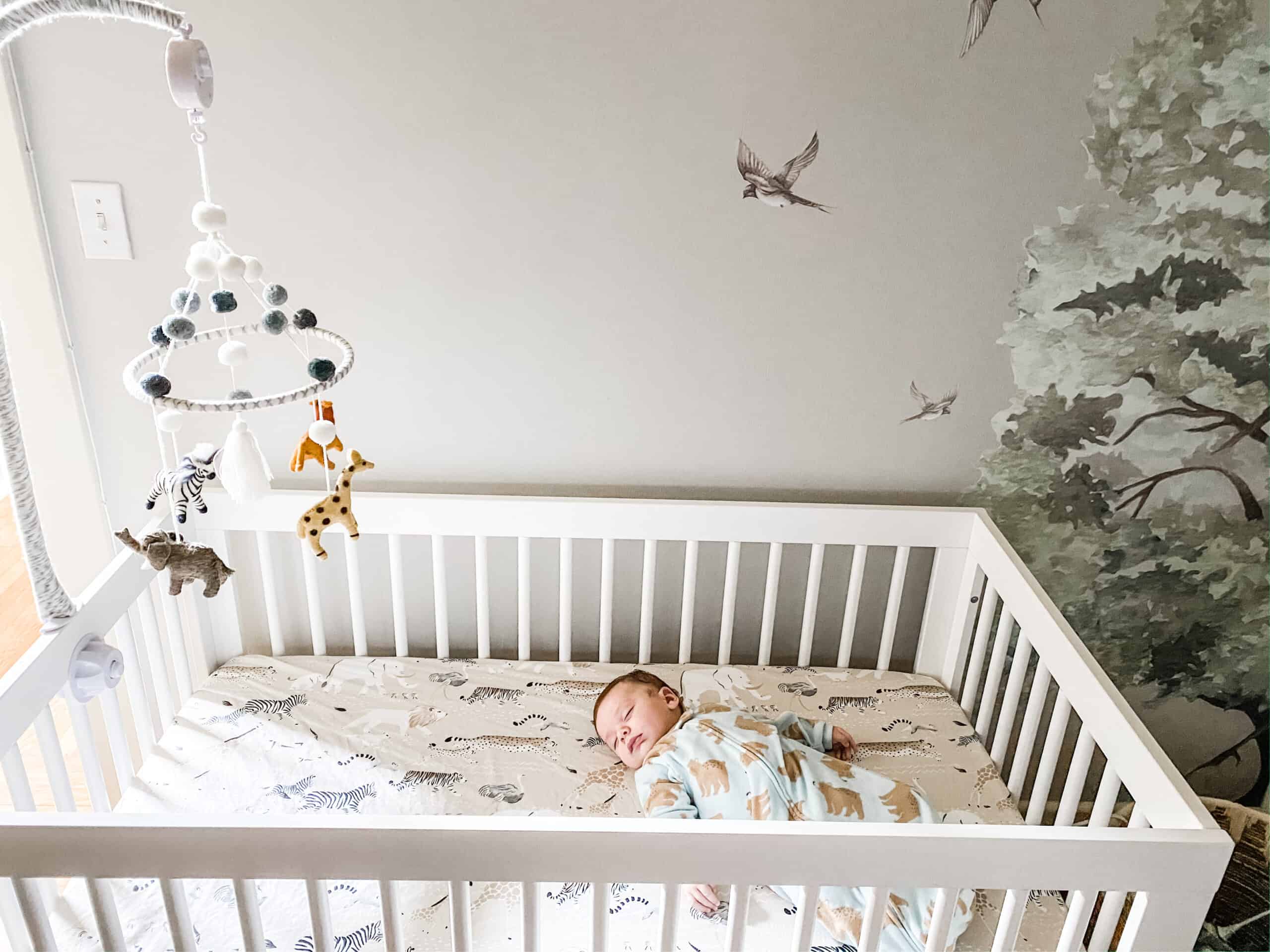
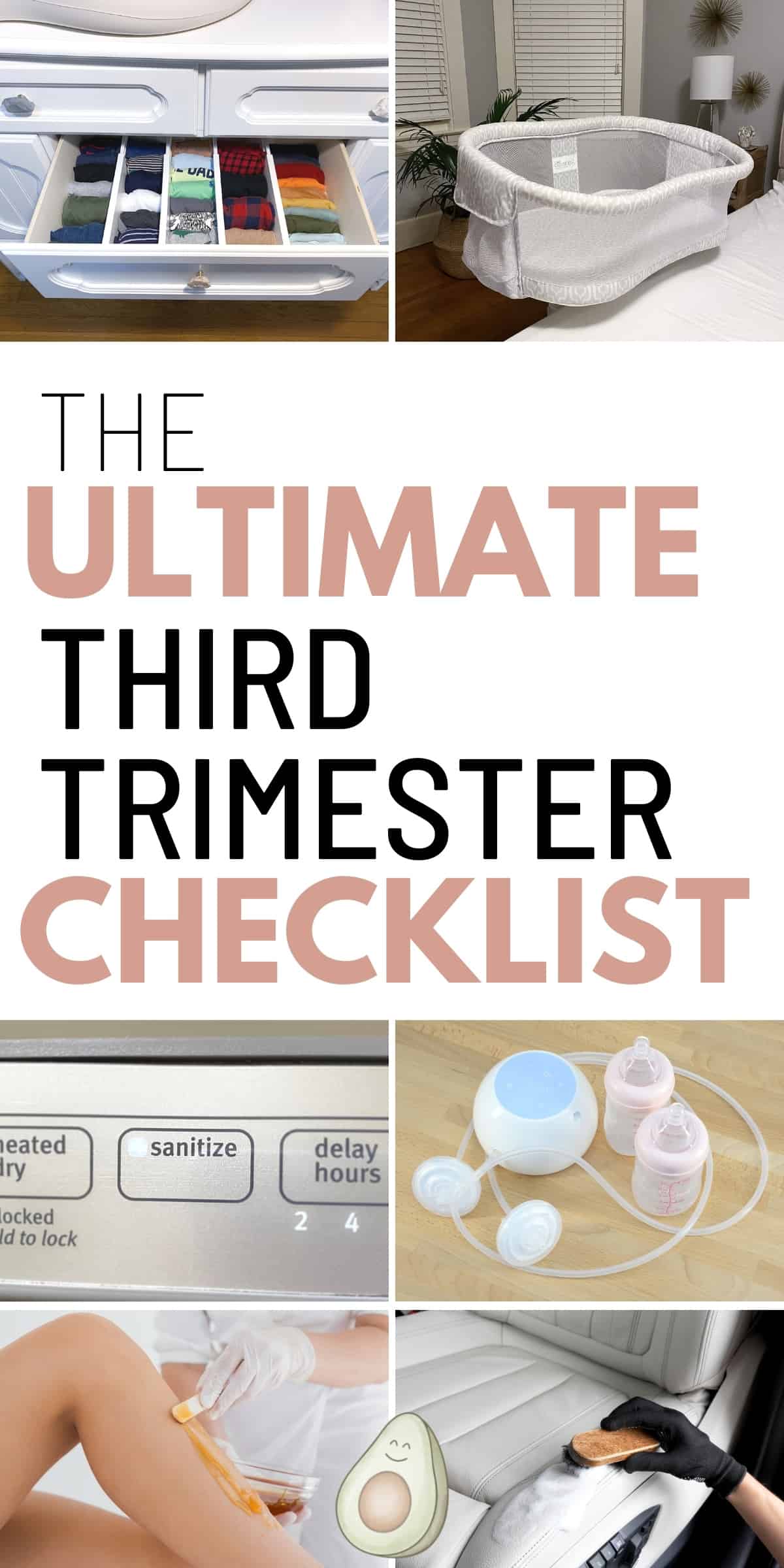
 Follow on Pinterest
Follow on Pinterest